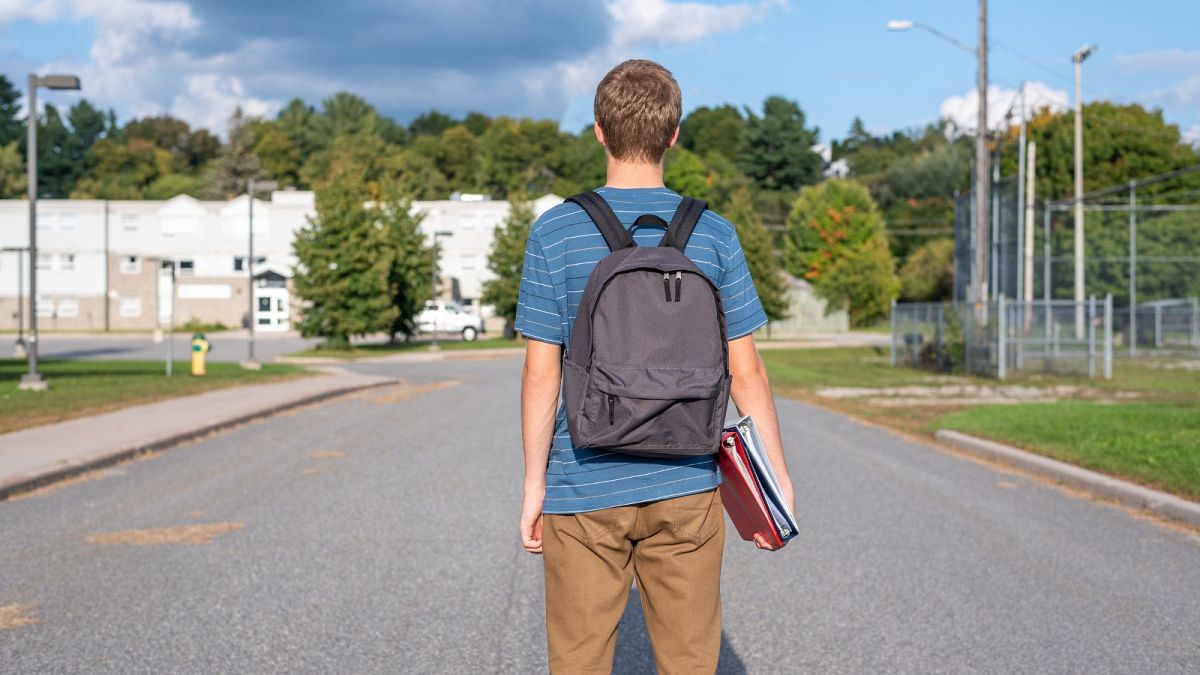Many more teenage girls are estimated to be depressed across Europe than boys. But is boys’ general difficulty to communicate their feelings leading experts to underestimate the depth of the problem?
Some 9 million young people aged between 10 and 19 are estimated to suffer from depression in Europe, according to the most recent data from 2021—before experts were able to assess the full impact of the pandemic breaking down the networks that normally tie kids and teens together, like schools, sports, and social clubs.
Since then, experts expect the number of kids and teens experiencing depression to have actually increased. “The problem has become bigger between 2010 and now,” Ian Goodyer, professor of Child and Adolescent Psychiatry at Cambridge University in the UK, told Euronews.
“If you went and asked 100 teenagers if they’d been clinically depressed in the last six months, between six and ten would say yes at this moment in time.”
The numbers speak of a health emergency that is dangerous to ignore: suicide is the second leading cause of death among adolescents in Europe, according to the WHO, with depression being considered a leading factor in suicidal behaviour.
That’s why it’s particularly important to understand where this epidemic of depression among young adults in Europe is coming from, and understand how to recognise the tell-tale signs of its impact on kids and teens.
This is particularly hard when it comes to boys.
Officially, data show that depression rates are higher among girls, with the negative impact of being exposed to impossible beauty standards on social media and being pressured to fit it into society’s suffocating expectation of how women should look and behave often credited for this imbalance. On top of that, violence against women and a hostility to women’s rights might contribute to feelings of despair and hopelessness among girls.
According to OECD data from 2018, 10 per cent of boys and 14 per cent of girls aged 11 in 28 European countries said they felt low more than once a week, on average. As they grew older, the differences between the two genders grew wider, with 29 per cent of girls reporting feeling low compared to 13 per cent of boys.
Girls’ depression is also estimated to be more severe than boys’. But experts think that identifying depression in boys could be more difficult than in girls, causing the issue to be vastly underrepresented.
“We don’t understand why, it might be a measurement problem linked to the way in which we ask boys about depression,” Goodyer said. “Or it might be that there are different features in mild depression in boys that we have yet to really understand.”
One key factor at play might be sexism. Among children under 13, there’s no sexism and no sex difference, Goodyer said, adding that it’s very uncommon in young children. When you ask teenagers between 12 and 19 about depression, girls experience it more severely.
“If you carried on measuring depression in 19- to 30-year-olds, you’d find probably more boys, more males come into the equation,” Goodyear said. “It’s quite complicated, and I’m not sure that we can really give the public a really good understanding of what this sex difference really means.”
How do boys experience depression?
As boys are socialised into believing that crying when feeling down is a sign of weakness, many lash out in anger or act irritated when actually experiencing sadness. For the same reasons, young men -- like adult men -- are more likely to seek help when experiencing emotional distress.
But teenage girls are just as likely to be irritable and angry when depressed, Goodyer said, adding that treating depression differently, according to gender, is neither useful nor beneficial. “Response to the sex difference in presentation has no impact on the risk for suicide or non suicidal self-harm,” he said.
But there’s something to explore in the way we detect depression in teens.
“Teenagers’ depression tends to present with more variation in mood states than adults’ depression,” Goodyer said. “If you look at the mood stage in the 11- to 19-year-olds, they’re often more irritable and they’re often quite angry, and you don't see that so much in adults.”
But it is true that in boys, Goodyear said, “irritability is present and maybe that has masked the depressive features.” What’s more likely, the psychiatrist added, is that when people see an irritable boy, they think it’s normal, while an adult seeing an irritable girl will likely ask what’s the problem with her, because of the biases we have.”
Do we need a new approach to the problem?
We might need a new way to talk about feelings and depression with boys, Goodyer suggested, adding that experts should conduct as many professional, practical interviews with boys as possible to learn the skills to understand them.
“Boys are less able to enunciate and talk about their internal constraints,” Goodyer said. “So you need people who are skilled in talking to boys and who will not be prejudiced by an aggressive and irritable presentation. And that’s quite a critical skill that needs to be learnt.”
For Goodyer, efforts to tackle teenage depression among young people should focus on early detection. This is something that’s being worked on, “but it’s going to be some time before we know what the best thing is to do,” he said.
“The next thing which should be being is just better treatment for depressed young people. I mean, the availability of treatment at the moment is terrible, and most child mental health services in Europe have been reduced because of just general income shifts and because there has been a reduction in some countries, particularly in the UK, in the number of people available to treat depressed teenagers, which is a big source of concern.”
According to Goodyer, “young people’s mental health has not been a high priority in any European country at all,” and it needs to be.
The issue of kids and teenagers’ poor mental health has reached the public, Goodyer said, but “there’s a big gap between the public perception improving and the available scientific evidence for policymakers to consider, and with spending the money on adolescent mental health to make things better for them because of that, of course, will improve mental health in the future.”
The progress being made in this field is slow, Goodyer said, and there’s a lot more to find out about the impact of depression on teens when they become adults.
“The long-term consequences of untreated non-responsive teenagers is very poor,” he said. “They become mentally ill. They have poor employment records, and worse social relationships in later life. So this is not a trivial matter to try and improve the mental health treatment availability to young people. It’s a serious matter.”



